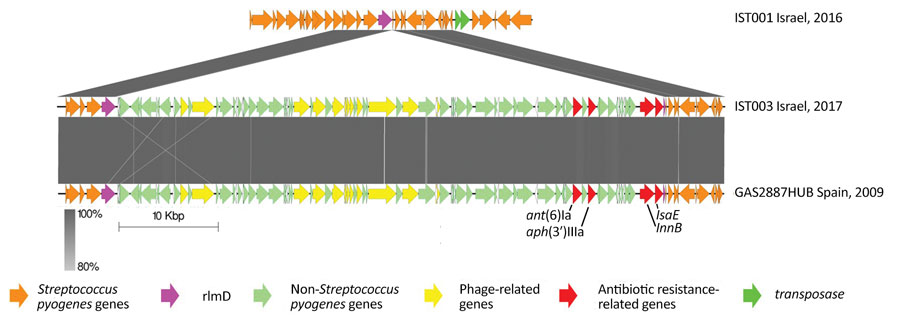Volume 28, Number 1—January 2022
Research
Invasive Multidrug-Resistant emm93.0 Streptococcus pyogenes Strain Harboring a Novel Genomic Island, Israel, 2017–2019
Figure 7

Figure 7. Schematic comparison of the integration site of the prophage carrying antimicrobial resistance genes for 2 invasive group A Streptococcus emm93.0 type strains from Israel and 1 from Spain. Arrows indicate gene arrangement in the presumed insertion site of the prophage, the rlmD gene (purple). The prophage contains gene sequences of antibiotic resistance related genes (ant(6)Ia, aph(3')IIIa, lsaE and lnuB), phage related genes and other non-Streptococcus genes. The gray regions indicate 80%–100% sequence identity.
Page created: November 30, 2021
Page updated: December 20, 2021
Page reviewed: December 20, 2021
The conclusions, findings, and opinions expressed by authors contributing to this journal do not necessarily reflect the official position of the U.S. Department of Health and Human Services, the Public Health Service, the Centers for Disease Control and Prevention, or the authors' affiliated institutions. Use of trade names is for identification only and does not imply endorsement by any of the groups named above.